If you are into bird watching and from Pune, then Sinhagad is surely one of the must visit places. Till now I have visited Sinhagad multiple times, out of which we have trekked all the way up to the fort twice.
The Sinhagad valley is pretty famous amongst birds especially for sighting the Asian Paradise flycatcher, Verditer flycatcher and the Ultramarine flycatcher. Once you take the left, you will start hearing calls of different birds and will start spotting birds in the valley. Soon you will see a huge tree which has a shrine at its base and small stream passes next to it. A lot of birds come at this point for water, hence a place with sure-shot sightings. Moving forward; you can keep moving along the trail which passes through the paddy fields; and after crossing the fields you need to take a right. You will realize that the trail disappears soon and you reach an open space beyond which is a relatively dense and woody jungle buzzing with bird calls. You may also occasionally hear and spot the barking deers.
Best time to visit the valley is as early as possible, and you will surely get to see some “not-so-common” birds perching. We generally try to reach at least by 6 AM or at max by 6:30 AM. When we went to Sinhagad for the 1st time, we got to see a pair of the beautiful Crested tree-swifts..! Credit goes to my wife Shraddha for spotting it and Sandip for identifying it. Yes, it was this place where I 1st met Sandip. Other species which we have spotted till date are white-spotted fantail flycatcher, Tickell’s blue flycatcher, Oriental white-eye, Scaly-breasted Munias, Black-naped Monarch flycatcher, Crested Serpent Eagle, Shikra, Black-shouldered kite, Jungle bush quail, Orange-headed thrush, Rufous Treepie, Coppersmith Barbet, White-cheeked Barbet, Black Drongo, White-bellied Drongo, Jungle Myna, Brahminy Myna, Indian Lored tit, Great tit, Sunbird, Common tailorbird, Jungle babbler, Tawny bellied Babbler, Puff-throated babbler, Common Iora, Indian robin, Oriental Magpie Robin, White-throated Kingfisher and the Indian blackbird.
You may also choose to trek to the fort, and you will surely get some good shots at the Crested Bunting, better known as the “Yuvraj”. When we trekked to the fort, we also managed to see the Yellow-eyed Babblers, Grey-breasted Prinia and the majestic Black Eagle. Once you reach the fort, you will be greeted by Jungle Mynas and the Indian Blackbirds. However the highlight was a pair of juvenile Pergerine Falcons we were able to spot from the fort…! Undoubtedly that was my best sighting till date.
Till now we have been to Sinhagad both in the summer season (May, June), once in the rainy season (August) and twice in winter season (October, December). Eagerly looking forward to visit this place more in the winter season.
Watch out for the more updates on this post… till then enjoy some of the birds I managed to click at Sinhagad Valley.
Directions: Once you pass Khadakvasla, you need to take the route all the way up-to Aatekar Vasti. This is the base village from where the trekking route to Sinhagad fort starts. In-order to access the Sinhagad bird valley; one should take a left just at the start of the trek route.
Preserve Nature and enjoy birding 🙂
– Rudraksha & Shraddha
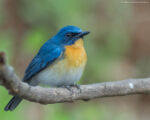
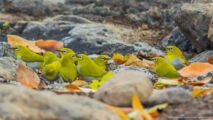
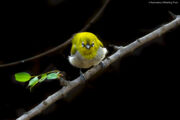
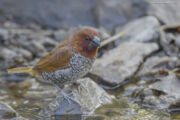
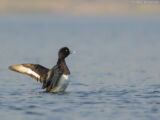
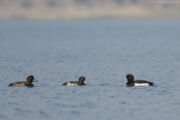
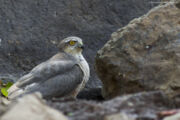
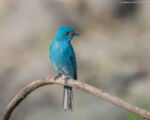
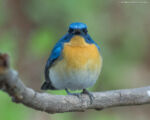
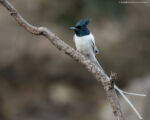
Article was really informative. I have not yet explored this area till now. But now it will be on my hot list.
I must say you have managed to click quite a few birds ….some of them are on mt wishlist too .
Thanks Radhika. Glad that you are following our blog. Stay tuned for more updates 🙂
Hi Rudra
need your suggestions.
Can I have u r contact ?
nice info. do you get any local guide?
Thank you Sanjay. Not aware of any local guides there.
Very nice and informative article, I am a beginner in wild life and birding.My first tour was to Corbett, Pangot, sattal.Since I am from Pune, I will definitely go to Sihagadh valley,
Thank you very much.
Gore Krishna,
Thank you 🙂
i am dr.Nainesh Parikh,interested to visit Singhad valley.what will be the ideal time to visit valley in mid Nov this year.I mean around 6.0am or later
Thanks for writing in Nainesh. Due to extended rains, I feel anytime after mid dec upto feb end should be a good time to visit Sinhagad Valley. Activity at valley generally starts at 8 am or so, so reaching by 7:30 am is good enough. Although i wouls suggest you to visit on a weekday to avoid crowd.
Hi I am Rohit Patel from Mumbai, is there staying facility nearby this place? want to go in end of Dec. 16
Hello Rohit,
Thanks for writing in. Not sure of any stay near the fort area, however you can look up for something on Sinhagad road near Mumbai – Bangalore highway junction. It will be around 30 odd minutes to Sinhagad Valley.
Intresting article. i would surely like yo visit the place
I am Pune for 10 days. I intend to be at the fort on 1st August. Hope to see some of you guys there as I am into birding .
is 70-300 enough for birding at Sinhagad valley? ‘coz i heard that there are so many photographers come along with their big lenses and hightech cameras
Hello Swapnil,
Thanks for writing in. We feel 300mm should be sufficient for bird-watching at Sinhagad Valley. Obviously you will not be able to match the quality output of a full frame DSLR and a prime telephoto lens, but can get pretty close shots during the season (November thru February) at 300mm. Hope that helps.
very informative. i am a newcomer in photography, so to say. i would really like to visit the spot asap. whats the right period to be there. it will certainly be on top in the priority list.
thanks a million for this informative blog.
A G GANU
AUNDH , PUNE